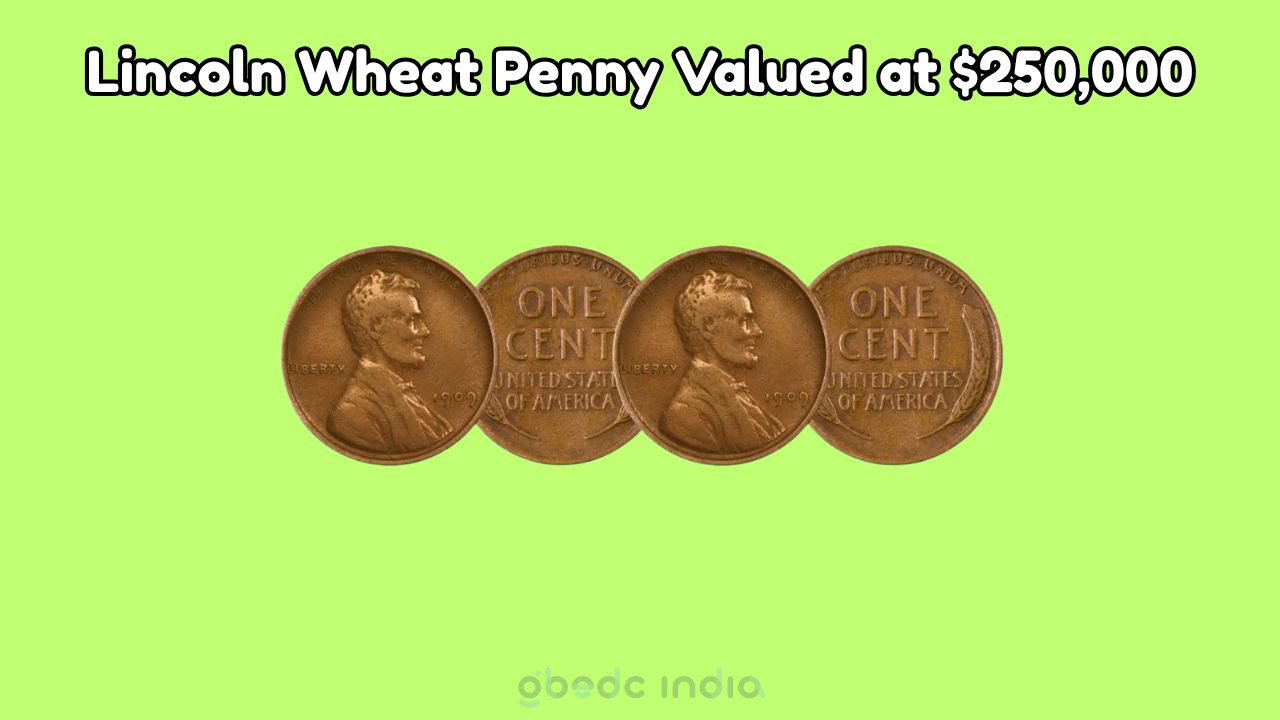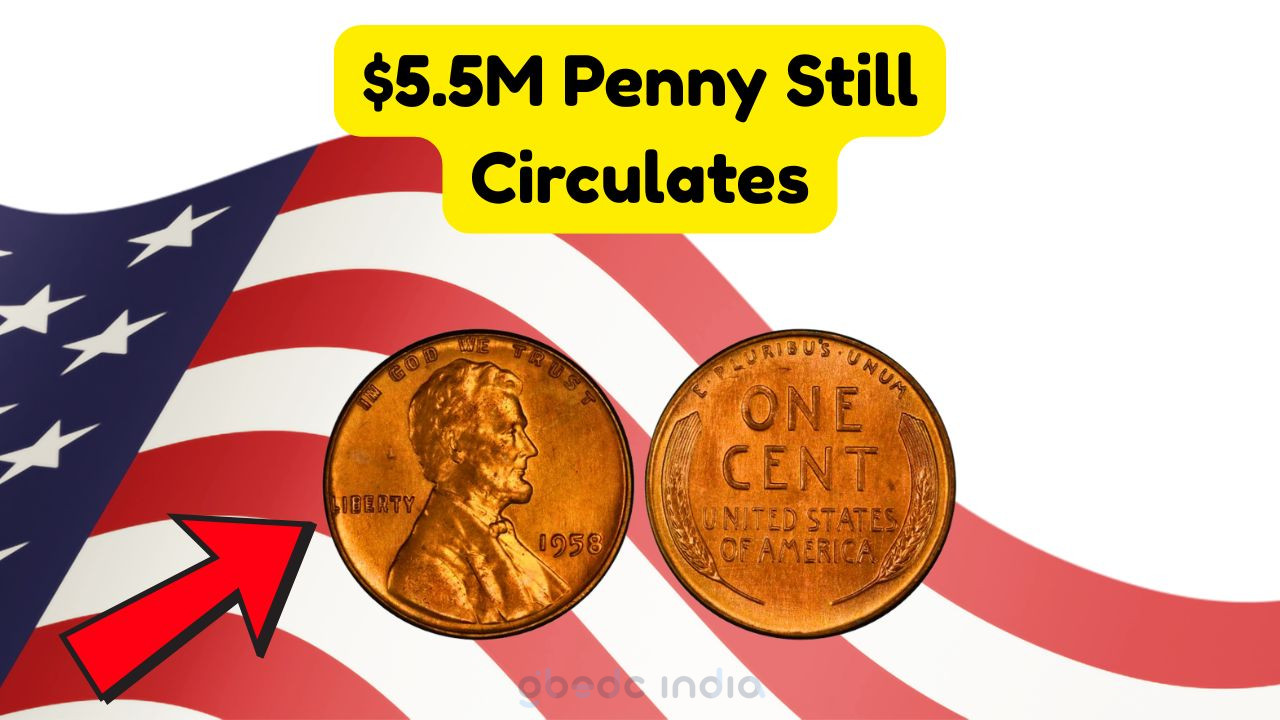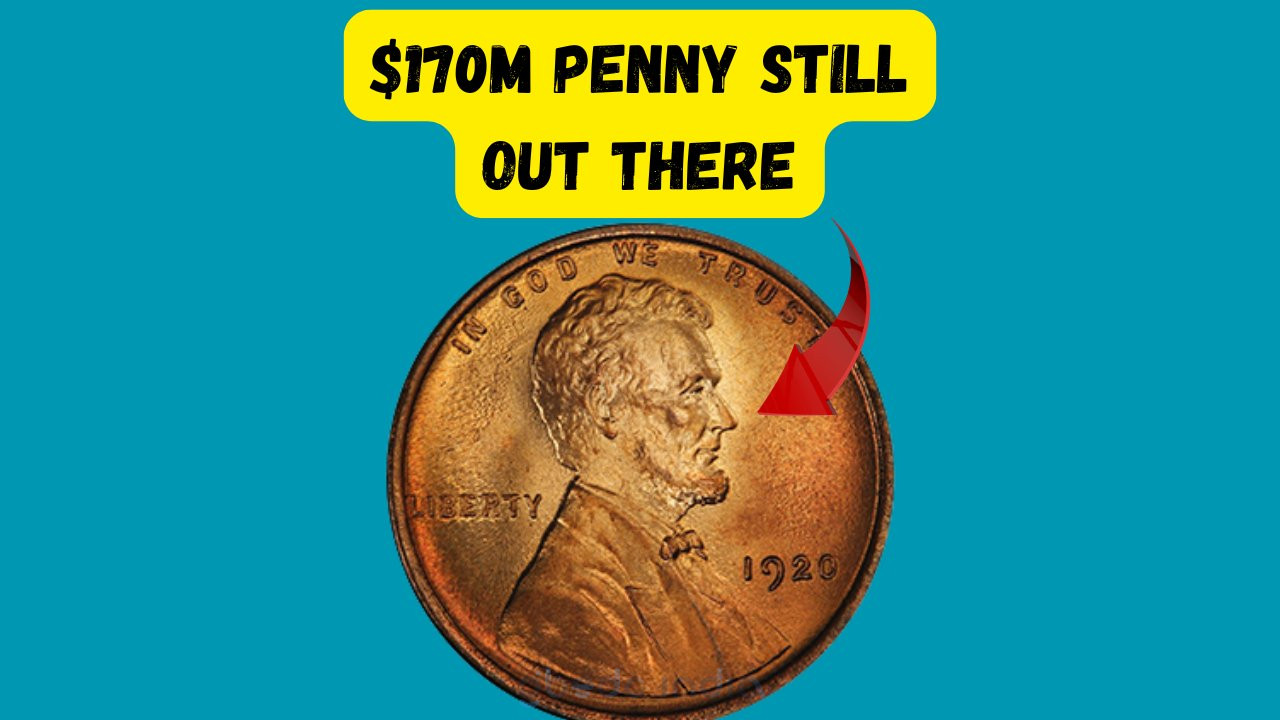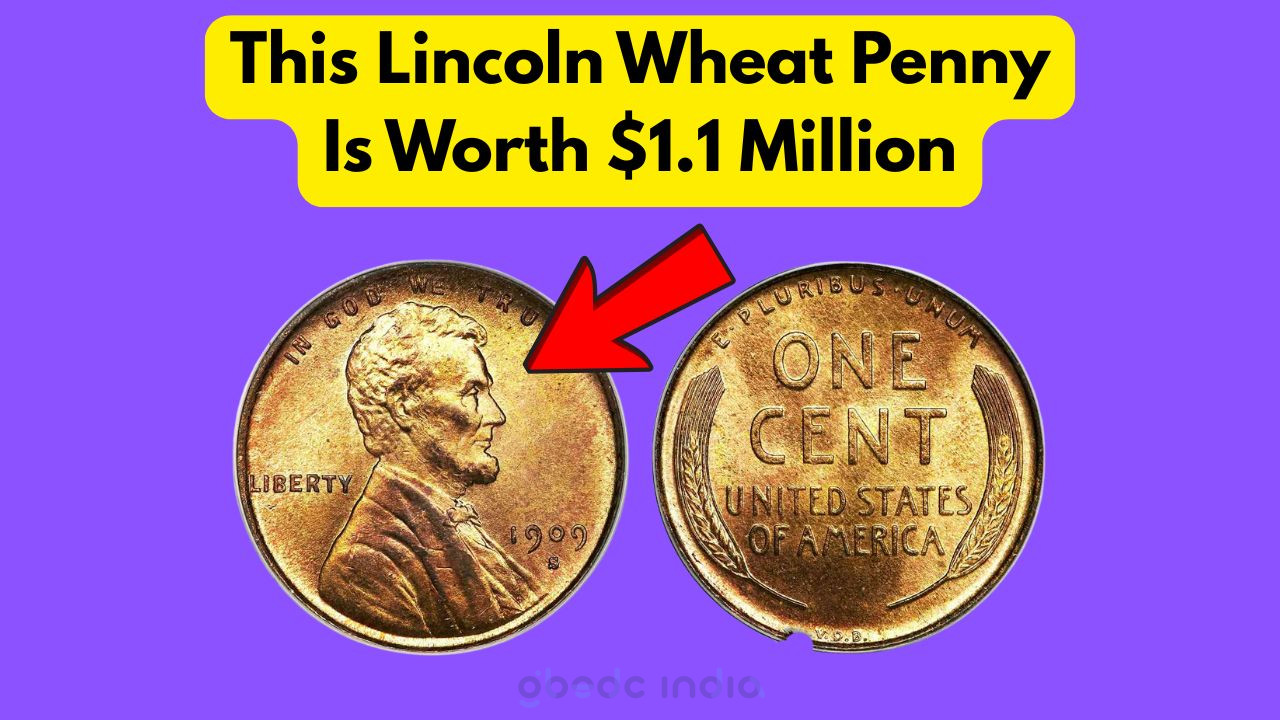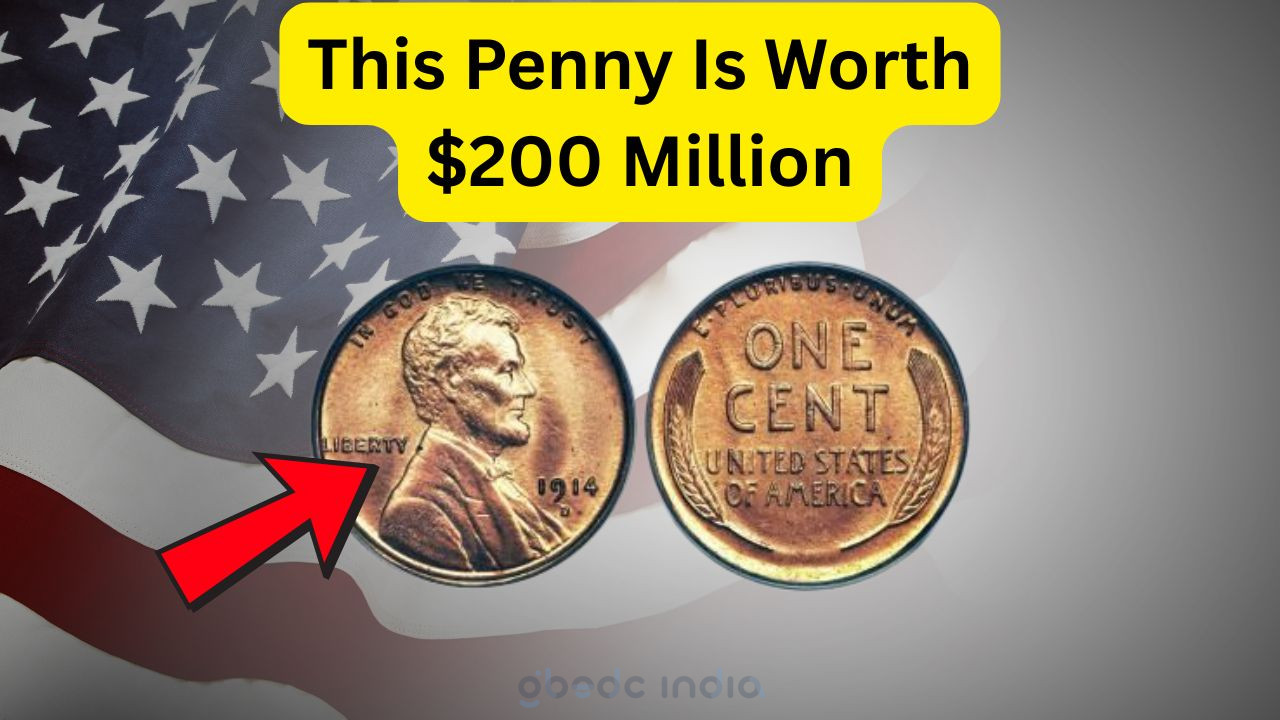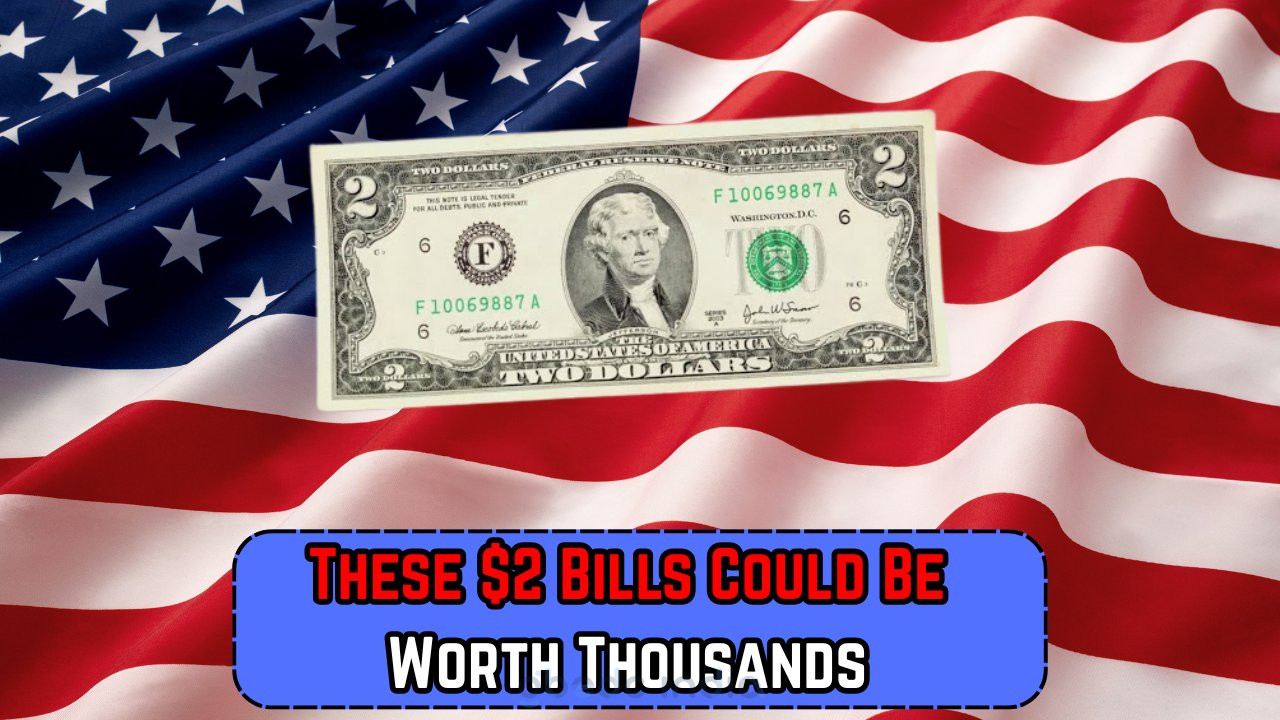Lincoln Wheat Penny Worth $250,000
Discovering the Value of the Lincoln Wheat Penny
Lincoln Wheat Penny: Many coin collectors and enthusiasts dream of finding a rare coin that could be worth a fortune. The Lincoln Wheat Penny is one such coin that has captured the imagination of collectors around the world. First minted in 1909, this penny features the iconic image of President Abraham Lincoln on the obverse side and wheat ears on the reverse. But what makes some of these pennies worth up to $250,000? Let’s delve into the fascinating world of the Lincoln Wheat Penny.
- History of the Lincoln Wheat Penny
- Rare Varieties and Errors
- Factors Affecting Value
- How to Identify a Valuable Penny
- Where to Sell Your Rare Coins
- Stories of High-Value Sales
- Tips for Coin Collectors
History of the Lincoln Wheat Penny
The Lincoln Wheat Penny was introduced in 1909 to commemorate the 100th anniversary of Abraham Lincoln’s birth. It was the first American coin to feature a realistic portrait, and its design was created by sculptor Victor David Brenner. The decision to use Lincoln’s image was both a tribute to the beloved president and a move to modernize American coinage. The penny was minted until 1958, after which it was replaced by the Lincoln Memorial design. During its production, several varieties and mint errors occurred, making specific coins highly sought after by collectors.
| Year | Mint Mark | Notable Features | Estimated Value | Rarity Level | Condition | Noteworthy Sales | Collection Importance |
|---|---|---|---|---|---|---|---|
| 1909 | S | V.D.B initials | $1,000+ | High | MS65+ | $100,000 | Legendary |
| 1914 | D | Low mintage | $5,000+ | Very High | MS63+ | $150,000 | Significant |
| 1922 | No D | Missing mint mark | $10,000+ | Extreme | MS60+ | $250,000 | Exceptional |
| 1931 | S | Low mintage | $100+ | Moderate | XF40+ | $20,000 | Valuable |
| 1955 | None | Double die | $1,500+ | High | AU50+ | $50,000 | Memorable |
| 1943 | None | Steel composition | $10+ | Common | VG8+ | $10,000 | Interesting |
| 1944 | D/S | Over mint mark | $100+ | Moderate | XF40+ | $5,000 | Noteworthy |
| 1958 | None | Last year issue | $5+ | Common | G4+ | $1,000 | Collectible |
Rare Varieties and Errors in the Lincoln Wheat Penny
As with many coins, the Lincoln Wheat Penny has several rare varieties and minting errors that can significantly increase its value. One of the most famous is the 1909-S V.D.B., where the initials of designer Victor David Brenner were initially included on the reverse but later removed due to controversy. Another sought-after variety is the 1922 No D penny, which lacks the Denver mint mark due to a filled die. The 1955 Double Die penny is famous for its doubled lettering, making it a favorite among collectors. These rare varieties are often the result of mistakes in the minting process, which inadvertently create unique and valuable coins.
- 1909-S V.D.B. – Controversial initials
- 1922 No D – Missing mint mark
- 1955 Double Die – Doubled lettering
- 1944 Steel Penny – Wartime metal
- 1943 Copper Penny – Minting anomaly
- 1936 Double Die – Slight doubling
Factors Affecting the Value of Lincoln Wheat Pennies
Several factors influence the value of a Lincoln Wheat Penny. First and foremost, rarity plays a crucial role; the fewer the coins minted, the higher the value. Condition is another critical aspect, with coins in mint or near-mint condition fetching significantly higher prices. The history and provenance of a coin can also enhance its worth, especially if it has been part of a famous collection or has a well-documented trail. Collectors also look for specific errors or varieties that distinguish a coin from its peers, such as double dies or missing mint marks. Finally, market demand can cause fluctuations in value, with prices often peaking during periods of heightened interest in coin collecting.
- Rarity
- Condition
- Historical significance
- Minting errors
- Market demand
Identifying a Valuable Lincoln Wheat Penny
Identifying a valuable Lincoln Wheat Penny requires a keen eye and knowledge of what features to look for. Start by examining the date and mint mark; some years and mints are more valuable than others, particularly those with low mintage. Look for any unusual features, such as doubling in the letters or numbers, which indicate a minting error. Checking the condition of the penny is also essential; coins with minimal wear and clear details are more desirable. Using a magnifying glass can help in spotting small yet significant details that could increase the penny’s value. Lastly, consulting a professional coin appraiser or using a detailed reference guide can provide additional insights into the penny’s worth.
- Check the date and mint mark
- Look for minting errors
- Assess the coin’s condition
- Use a magnifying glass
- Consult a coin appraiser
Places to Sell Your Rare Lincoln Wheat Penny
Once you’ve identified a potentially valuable Lincoln Wheat Penny, the next step is finding the right place to sell it. Coin auctions are an excellent venue for rare and high-value coins, attracting serious collectors willing to pay top dollar. Online marketplaces, such as eBay, offer a broad audience, but it’s essential to ensure your listing is accurate and includes clear images to attract buyers. Local coin shops can provide a convenient option for selling, although they may offer lower prices due to overhead costs. Coin shows and conventions are also great for networking with collectors and dealers who may be interested in purchasing your coin. Lastly, reaching out to specialized numismatic services can help in selling high-value coins with professional expertise.
- Coin auctions
- Online marketplaces
- Local coin shops
- Coin shows and conventions
- Specialized numismatic services
Famous Stories of High-Value Lincoln Wheat Penny Sales
Throughout history, there have been some remarkable sales of Lincoln Wheat Pennies that have captured the attention of collectors and enthusiasts alike. One of the most famous is the sale of a 1943 copper penny, which fetched over $200,000 at auction due to its rarity and unique composition. Another notable sale involved a 1955 Double Die penny, which sold for $125,000, highlighting the value of minting errors. These stories fuel the passion of collectors who dream of discovering a similar treasure in their own collection. Such sales demonstrate the enduring allure and investment potential of rare coins in the numismatic world.
- 1943 copper penny – $200,000
- 1955 Double Die penny – $125,000
- 1909-S V.D.B. penny – $100,000
- 1922 No D penny – $250,000
- 1936 Double Die penny – $50,000
Tips for Aspiring Coin Collectors
For those new to coin collecting, starting a collection can be an exciting yet daunting endeavor. Begin by educating yourself on different coins and their historical significance, which can guide your acquisition choices. It’s essential to set a budget and stick to it, as the allure of rare coins can quickly lead to overspending. Joining a local coin club or online community can provide valuable insights and networking opportunities with experienced collectors. Investing in proper storage solutions, such as coin albums or holders, will protect your collection from damage. Lastly, always verify the authenticity of coins before purchasing, as counterfeits can be prevalent in the market.
- Educate yourself on coins
- Set a budget
- Join a coin club
- Invest in proper storage
- Verify authenticity
Frequently Asked Questions About Lincoln Wheat Pennies
Are all Lincoln Wheat Pennies valuable?
Not all Lincoln Wheat Pennies are valuable; only those with rare dates, mint marks, or errors typically have significant worth.
How can I tell if my penny is a rare variety?
Look for unique features such as date and mint mark combinations, minting errors, or unusual compositions that distinguish it from common pennies.
What is the best way to sell my Lincoln Wheat Penny?
The best way to sell a valuable penny depends on its worth; for high-value coins, auctions or professional numismatic services are recommended.
Should I clean my Lincoln Wheat Penny before selling it?
No, cleaning a coin can reduce its value by damaging the surface; it’s best to leave it in its original condition.
What tools do I need to start coin collecting?
Basic tools include a magnifying glass, reference guides, proper storage solutions, and potentially a scale for weighing coins.
